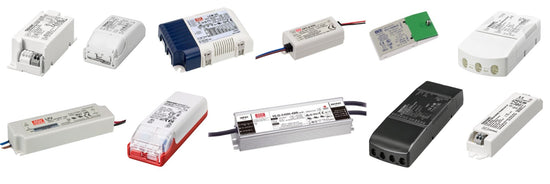
The lighting industry has seen lots of changes over the recent years, one of the biggest changes has been since traditional incandescent bulbs were removed from the market and replaced with LED energy-saving bulbs.
Here at LED Spares we walk you through what you need to know to buy the best bulb for your needs.
Once you've narrowed down your choice of size, lamp cap, type and brightness, We should have a bulb to suit your requirements at a competitive price. We only stock quality manufactured bulbs with full manufacturers guarantees.
1) Choose a light bulb with the right fitting (lamp cap)
Many a mistake has been made picking the wrong cap for your replacement lamp as there are an awful lot of different caps/fittings to choose from. The list below shows the main versions associated with domestic bulbs. If you click on the image you will be re-directed to all of our bulbs with that particular cap/fitting. If you still can't work out which fitting you require no problem just take a picture of your existing bulb and e-mail it through to our sales team at sales@ledspares.co.uk we are always happy to help.
 GU10 Cap (Twist and Lock)
GU10 Cap (Twist and Lock) ES (E27) Cap (Screw in)
ES (E27) Cap (Screw in) BC (B22) Cap (Twist and Lock)
BC (B22) Cap (Twist and Lock)  SES (E14) Cap Screw in )
SES (E14) Cap Screw in ) SBC (B15) (Twist and Lock)
SBC (B15) (Twist and Lock)
2) Don't be put off by the upfront cost of LED lights
They could save you hundreds of pounds in the long run. Below is a summary of how much a typical 700+ lumen bulb might cost you per year if you have it on for around three hours a day.
LED annual running cost £1.71 These use almost 90% less energy than a traditional incandescent, making them the most energy-efficient type of lighting. LEDs are usually more expensive to buy, but should last up to 25 years. An LED could save you more than £180 in energy use over its lifetime, compared with an old-style incandescent bulb.
3. Get the right light bulb brightness and colour
OK so now you know which lamp cap/fitting you require the next choice is which type of light you'd prefer. This breaks down simply into brightness, otherwise known as watts or lumen output; and the colour of the light, measured on the Kelvin scale. Don’t be put off by these technical terms – here is a brief explanation. Watts and lumens (brightness) years ago, when most homes were filled with old incandescent/halogen bulbs, brightness was measured in watts – this was actually a measure of power. Since the introduction of energy-saving bulbs, this is a less useful measure of brightness, as new bulbs use a lot less power to produce the same amount of light. Now light output is measured in lumens. The higher the number of lumens, the brighter the light. Please check the description of the lamp you chose on the website, we list the LED wattage and the comparable old lamp wattage and the lumen output to help with this. As a rough guide, around 400 lumens would be suitable for a bed-sized table lamp, whereas you might want between 1,500 and 3,000 lumens in total (from more than one bulb) for a good-sized living room. If you need extra flexibility in the lumen output required we do stock a number of dimmable LED Bulbs to assist you with this.
Now you have decided on how bright you want your bulbs, you need to decide on the colour of the light. Kelvin scale (colour of light) . There are a few popular basic strategies when it comes to choosing bulbs for the home. Perhaps the most popular is to select a colour temperature you like and feel comfortable with. (typically in the warm light range). Then install these bulbs everywhere. This has the advantage of making your home’s lighting uniform, which makes transitions from one room to the next less jarring. Another option (the one I personally prefer) is to use warm white bulbs in the primary lighting in areas like the living room, dining room, bedrooms, and hallways. We have a great range of decorative filament LED bulbs which make a great centre piece to any room, click the image below for prices.
For the rooms you require more attention to detail like the kitchen (fixtures above work areas), bathrooms, garages, offices and reading lamps opt for cool white or daylight bulbs. There is no rule for exactly which colour will look the best but you can always try different options to find what works for you and your home.
4. Find the best shape
Now you have your bulb fitting and the colour and brightness in the bag, you will need to decide the shape of the bulb you want. Again, there is a variety of different shapes to chose from. If you are replacing an existing lamp it should be easy enough to match up a replacement on our website, however if you are struggling please feel free to take a picture of the bulb and email our sales team for any help.
One thing to know is that different shapes of bulb provide a slightly different spread and angle of light, from the almost 360-degree spread of a globe or golf bulb, to the narrow beam of a spotlight. The 'right' shape of the bulb and spread of the light is essentially down to your personal preference, but do consider how the bulbs will look when they are switched off as well as on (if they are visible) for example make sure they they don't protrude out of a lightshade so make sure they will fit sensibly in their chosen location.
5. Quality
Lastly one thing to remember is to opt for a good quality bulb with a manufacturer you can trust. There are 1000's of brands for LED products in the market place, buying just on price alone isn't always the best option! Here at LED Spares we only stock quality branded lamps and competitive prices backed up by the manufacturers warranty and we offer full technical support for all your lighting requirements.
We hope you found this article helpful? If so, make sure you sign up our newsletter with regular special offers and new product releases.
Many thanks



